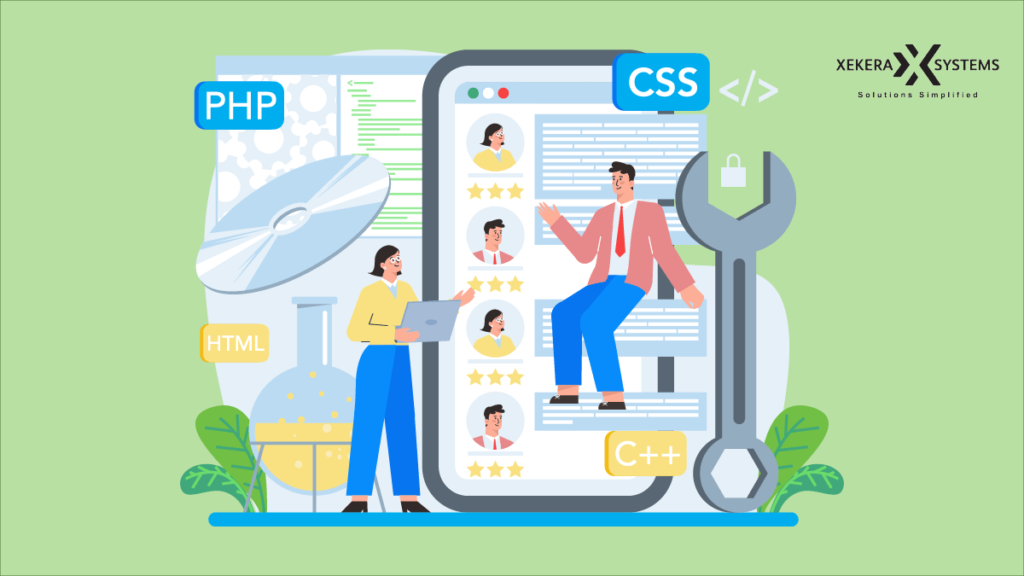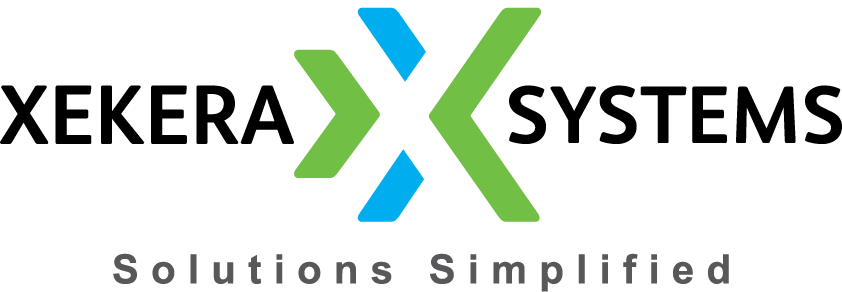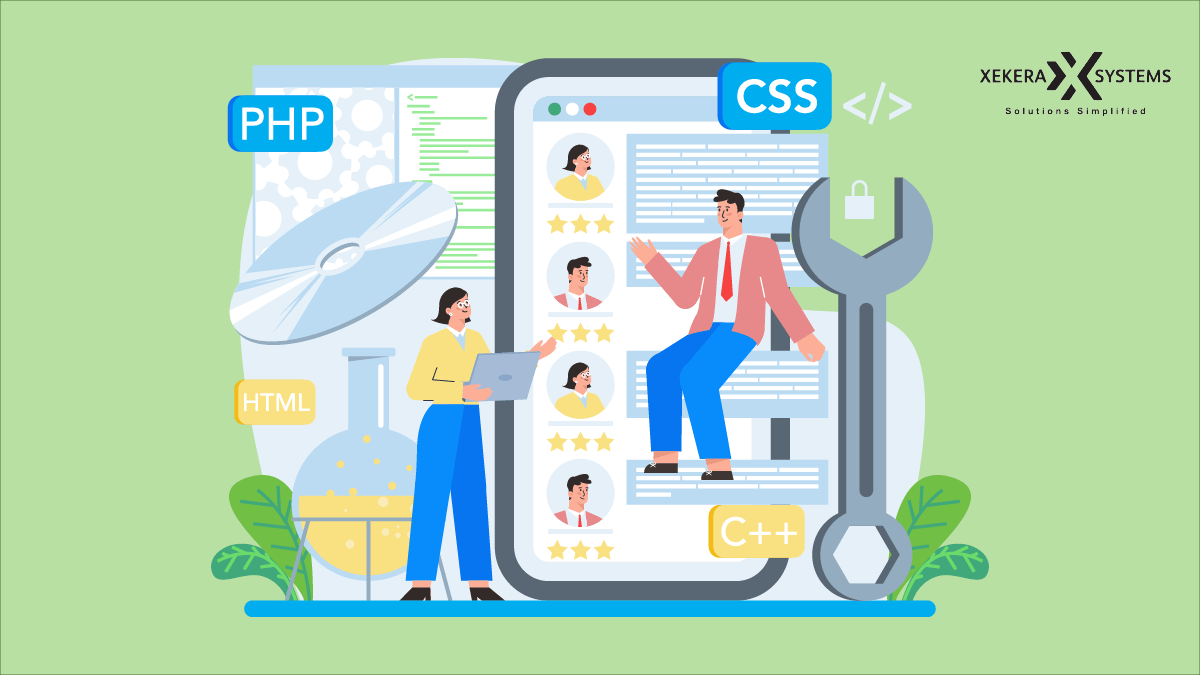Understanding the smart and cost-cutting way businesses are adopting to scale and solve problems in straightforward ways with custom software development.
To be or not to be, that’s the question businesses face when it comes to choosing between customized software and off-the-shelf software. In some ways, the difference between the haves and the have-nots may be a question. Being a successful custom software development company ourselves and forced to innovate cutting-edge solutions on a regular basis, we know first-hand what to do when.

If organizations are to digitally transform, then the installed software would have to match the needs as well. If you are in the midst of such a dilemma, by the end of this article, you would get clarity on the subject. So let’s start by answering the question, what is custom software?
What is a Customized Software?
Software that comes pre-packaged with features is referred to as Commercial Off The Shelf or COTS. The supplier who develops it is responsible for updating its versions. Businesses restrict users who sign up to it by paying a license fee. It is designed with the most versatile needs of the mass market in mind. Microsoft Windows is an example of COTS. It offers a device for every user to perform everyday computing tasks without having to think twice.
On the other hand, software that you develop or ask a third party to customize for you is called customized software. Because it is created unique to the needs of a particular user, it is also called custom software. It is custom made and places a strong emphasis on features that are relevant to the organization. Custom software applications are tailored to meet ongoing and upcoming business requirements.
Tasks that would take ages to complete with standard software can be done in no time with custom software applications. Think of it this way, a COTS is a public utility vehicle that takes into account the combined choice of passengers and goes fast enough to keep those on board comfortable. Whereas custom software is a private car that you can customize to your liking and break speed limits with it.
Now that you understand what proprietary software is, let’s learn about its development process that an app development company follows throughout the cycle.
Does Custom Software Development Process Differ from Standard?
Not at all. The software development life cycle is almost identical in each case. You go through the same stages of gathering basic information, coding, testing the software for inconsistencies and finally moving to deployment.
There is an unprecedented urgency for businesses to transform digitally for sustenance. Everyone is trying to differentiate themselves and be seen as an innovator. Whether it is an in-house project or one that is outsourced to a company like Xekera Systems, custom software development includes the following stages:
Application customization
You either purchase COTS software and reprogram it according to requirements, or create a custom solution. No matter what you choose, it will start at this stage of code generation.
Application modernization
Over time, stakeholders realize that their value chains must improve and be as compelling as their product set. Custom software deployed will need to be upgraded with features as new technologies emerge.
Application management
It’s similar to after-sales support, but you either do it in-house or have it done by a third party that designed the software for you. These include everything from installing the software to ensuring its availability 24/7.
Why Choose Custom Software Development?
The reason custom software is preferred is because of changing market trends that make it costly or time-consuming to transform a business. Custom software application development helps businesses create an intuitive and user-friendly software product tailored to their business requirements. It also handles different types of organizational problems such as process complexities, employee problems, and satisfying customer preferences.
Some points are discussed below for choosing custom made software:-
Flexibility
One of the major advantages of custom software companies is their flexibility. Any required change can be easily confirmed so your platform is always updated with ongoing designs. A considerable degree of flexibility offers efficiency in the work process. Competing processes can be easily automated so that the framework automatically guides the user and no human intervention is required.
Better integration
Organizations for improving their own programming applications provide a wide range of options for incorporating different kinds of APIs. The vast majority of affiliate programming is not viable with different programs, so incorporating another product to improve its capabilities is impractical. It is this explanation; many organizations lean toward custom software applications over off-the-shelf programming.
Future innovation
Having your own types of proprietary software allows you to explore and adopt creative ideas more quickly without relying on other innovators to do it for you. This can help in better marketability as your brand would be seen as a forerunner of the innovations that the user desires and not as a laggard.
Application security
The Internet has a complex threat environment, and application security is a serious concern for modern organizations, regardless of their size. An application on the Internet is subject to a security breach. Every organization is taking measures to protect their customized software application development products from being misused by hackers, the current situation is still worst. By engaging with a projected custom app development organization, organizations can take additional measures to protect their information from hackers and disgruntled workers.
Cost reduction
Sometimes a business doesn’t need all the features a format offers, but had to pay. When you build your own software, you choose what you need and only pay for it. Apart from that, there is something interesting and that is common solutions that usually require monthly or annual licensing costs. There are already many payments in the process, which when you add up, it will be much more expensive. If you choose your own solution, you will pay more initially, but you don’t have to put in a lot of effort later on. With outsourced software development, you get an accurate estimate of software development costs. You can say that the cost of custom software development is a one-time investment.
What are the benefits of custom software development?
There is no good reason to buy an inferior product and then modify it for installation. Why not create the whole thing yourself! The following benefits of custom software will help you decide. The benefits can also be seen as ways in-house app development can enhance app development:
Vendor independent
Own design software and you’ll be free from the clutches of vendors who upgrade their product based on user adoption and trends rather than your needs. This way, your company avoids fee increases caused in the name of licensing and maintenance. Then there is the possibility that the vendor will go out of business, leaving your IT department in the lurch and affecting business continuity.
However, you will need to hire subject matter experts to deal with a proprietary solution. But again, it doesn’t say how much indirect benefit you would get from them, as mentioned in the next point.
Create white label products
The resources you devote to creating a custom in-house solution can be monetized by licensing it to similar companies or allowing them to use it as a White Label product by making a one-time payment. A White Label product is a product that you create and sell to another organization, giving them the right to use it under your brand name. The only catch here is defining the terms of use. Although white label solutions are not always considered to be effective in the long term, they can be a good choice, however, for entrepreneurs who are just starting their journey.
High-End integration
Investing in COTS software becomes a smart situation when you realize that you have to program extensions into the system to pay off. Redirecting those same expenses to custom software applications that integrate effortlessly with other software (because you did) will save you much-needed energy.
Performance
In-house software development ensures more stable and efficient IT operations because the software does everything (perhaps more) that is required of it to deliver value-added results.
Scalability
No one knows the future of your business better than you. It becomes a self-fulfilling prophecy that as you develop custom software applications, you will come up with something that is scalable and adaptable to your company’s needs.
Optimized business process
Each association has its own plan of action and its own processes. It is difficult for businesses to change their process to suit a specific application, no matter how efficient and powerful it may be. Software should be planned and developed to align with the business model. Custom development helps improve your business processes instead of replacing them.
Compatibility
Most organizations have a design model in which the output generated by a particular process (software application or module) acts as an input to another process. A smooth flow of data is essential for business efficiency. Using different packaged programs for different processes can disrupt data flow. By creating your own software, a number of problems related to the flow of data between progressive processes can be solved.
Data security
A significant concern for some B2B and B2C organizations, data access and security issues affect many end users in the market today. Supporting costly security protocols can force you to pass on additional costs to the services you offer to your customers. With in-house development, you have the ability to choose which data security technology or protocol is right for your business and coordinate them in your software.
Cost effectiveness
With custom development, you can plan and organize the development process. You don’t have to contribute huge amounts of money first to get automation rewards. Based on your financial plan and the availability of funds, you can start automating individual process flows in a coordinated and planned manner over the long term to turn development into affordable software development services.
Adaptability
Organizational processes change over time and as market dynamics change, it is important to adapt to new processes and innovations to maintain your marketing strength. Custom software can be changed effortlessly – new cycles and innovations can be incorporated into your current programming as show patterns change, so you can stay side by side with your rivals.
How to Decide Whether You Need a Bespoke Solution or Not?
Companies traditionally prefer to purchase COTS software on the assumption that it will help them meet up to 80% of the following business requirements.
- Either enable or completely automate B2B transactions and processes unique to the business
- Be aware of proprietary information and protect confidential data
- Sufficient for ad-hoc privacy issues that may arise
- Enable integration with software the company has already deployed
- Reduce operating costs and increase return on investment
- Give the brand some level of competitive advantage
There are companies that may be fine if the software provides 60% efficiency rather than 80%. They fill the vacuum that exists themselves. But that’s a risky proposition, leaving things up to chance and making superficial digital transformation efforts.
A big reason why startups cover legacy businesses faster than others is that they don’t hesitate to innovate. And if that means bringing new digital solutions, then yes.
Prepare the requirements
Once you’ve decided to develop your own software, the next step is to identify collaborators to help you develop the project internally. These include program sponsors, high-level stakeholders, sometimes your customers, and other various partners.
This step is all about communicating your digital transformation plans to your workforce, with a detailed proposal outlining your key performance indicators (KPIs). KPIs must keep in mind:
- Meet any statutory or theoretically unattainable targets and be realistic
- Define the role the proposed software will play in business development
- Leave no room for conjecture in the sense that the complex capabilities of the software are discussed with project stakeholders
- Software deployment must not interfere with pre-existing COTS software
- There must be enough proof of concept in the market to base and validate your theory
- The source code used should not violate intellectual property rights and must be either open source or written from scratch
- The allocated budget and time limit should be respected
- If necessary, there may be partial deviations/pivots from the originally agreed procedure
Development methodologies you can use
You can choose any of the following software development methodologies:
Waterfall model
Designed in the 1970s, the waterfall model is robust in its implementation and benefits those with a clear understanding of the requirements. Setting expectations is followed by rigorous project documentation. It is sequential in nature, meaning that one phase of the project must be completed before the next can begin. It includes the following stages:
- Define the scope
- Reevaluate the range
- Design
- Tool
- Test
- Deploy
- Maintain
Not that this model has gone out of style, but development teams that want to mix things up and be ready for last-hour plan changes don’t really like the Waterfall model. It is created for those who like to work according to fixed rules.
Agile development
Agile is the exact opposite of waterfall, in fact it was introduced to remove the rigid and inflexible redundancies of the waterfall model. Prioritizes business unit collaboration over documentation. Teams that are agile do this to package coding into design sprints, which are time-limited mini-projects, to speed up software development. Customer satisfaction is the priority here, everything else takes a back seat. Here at Xekera Systems, we believe in Agile more than other methodologies as a custom software development company. Based on experience, we can help you easily decide between Agile and Waterfall models.
Scrum
It is a nuanced approach between older models like Waterfall and newer ones like Agile. It facilitates regular team interaction, but with a relative amount of self-discipline that team members must impose. Sprint retrospectives in scrum development last an average of two weeks, during which the primary software development goal is broken down into smaller, more achievable goals. Developers stick to daily briefs that are the result of demo feedback. The development is fast and the results are stable.
Lean
Call it what you will, the philosophy, methodology, or way of thinking brings tremendous productivity to teams at custom software companies. While the other items on this list were specifically designed to enhance software development practices, the Lean methodology was adopted from the manufacturing sector.
Agile accommodates flexibility, but offers no course of action to extend the same ideology to business wings outside of information technology. Lean proposes a no-nonsense approach that eliminates wasteful practices, encourages knowledge sharing, experimentation, innovation and faster turnarounds.
Function Driven Development (FDD)
Custom software design and development can also be undertaken through Feature Driven Development. FDD was the forerunner of the now ubiquitous agile and lean approach. It follows a five-stage model of development. In the first step, you transfer your plans to the board and create an overall strategy. The next step is to define the software specifications, followed by comprehensive planning around each feature. The design and construction of each feature form the last two phases.
Make up your mind
We hope this clears the air around custom software development. Whether it is an on-demand or off-the-shelf solution, Xekera Systems has a track record of success in both categories. Our report card in this subject boasts nothing less than an ‘A’, with top trade journals awarding us 10/10 on numerous occasions. I sign off with a saying that is dear to everyone at Xekera Systems.
If you want to develop an app that would be up-to-date with all the latest technologies of the present time, you should associate with a software application development company that is well suited to the changing needs of the market or you can opt for a developer. in your area, such as a software development company in the US, California if you live in the US. But make sure you choose the best to get quality results.




You ought to be a part of a contest for one of the greatest sites online. I am going to recommend this website!